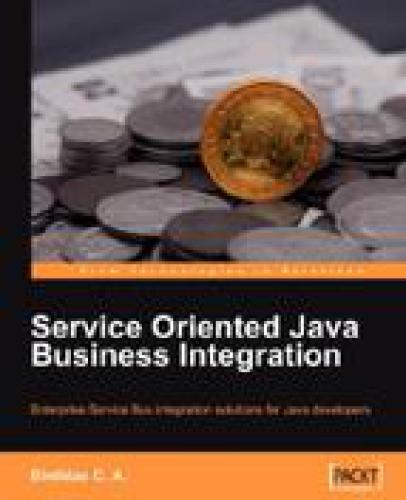

Most ebook files are in PDF format, so you can easily read them using various software such as Foxit Reader or directly on the Google Chrome browser.
Some ebook files are released by publishers in other formats such as .awz, .mobi, .epub, .fb2, etc. You may need to install specific software to read these formats on mobile/PC, such as Calibre.
Please read the tutorial at this link: https://ebookbell.com/faq
We offer FREE conversion to the popular formats you request; however, this may take some time. Therefore, right after payment, please email us, and we will try to provide the service as quickly as possible.
For some exceptional file formats or broken links (if any), please refrain from opening any disputes. Instead, email us first, and we will try to assist within a maximum of 6 hours.
EbookBell Team

5.0
40 reviewsIn Detail
The goal of Java Business Integration (JBI) is to allow
components and services to be integrated in a vendor-independent
way, allowing users and vendors to plug and play.
Java Business Integration (JBI) is a specification aiming to
define a Service Provider Interface for integration containers so
that integration components written for these containers are
portable across containers and also integrate with other components
or services using standard protocols and formats. JBI is based on
JSR 208, which is an extension of Java 2 Enterprise Edition
(J2EE).
This book first discusses the various integration approaches
available and introduces the Enterprise Service Bus (ESB), a new
architectural pattern that facilitates integrating services. ESB
provides mediation services including routing and transformation.
Java Business Integration (JBI) provides a collaboration framework
that provides standard interfaces for integration components and
protocols to plug into, thus allowing the assembly of
Service-Oriented Integration (SOI) frameworks following the ESB
pattern. Once JBI and ESB are introduced, we look at how we have
been doing service integration without either of these using
traditional J2EE. The book then slowly introduces ESB and, with the
help of code, showcases how easily things can be done using
JBI.
What you will learn from this book?
Assembling services and porting them across containers using
JBI
Exposing EJB as a WSDL-compliant service across firewalls
Binding remote services to ESB to be consumed internally
Exposing local components in ESB like POJO as externally
accessible WSDL-compliant services
Providing a web service gateway for external consumers
Accessing web services over a reliable transport channel like
JMS
Implementing web service versioning using ESB
Implementing service aggregation at ESB
Transactions, Security, Clustering, and JMX in ESB
A programmer, designer, or architect in Java who wants to learn
and code in JBI or ESB.
A programmer, designer, or architect who doesn't normally code
in Java can still benefit from this book, since we 'assemble
integration components' using XML with little to no Java code.
An IT Manager or an Officer who knows well about SOA or SOI but
want to see something in code (you can adorn your flashy
presentations with some live code too).